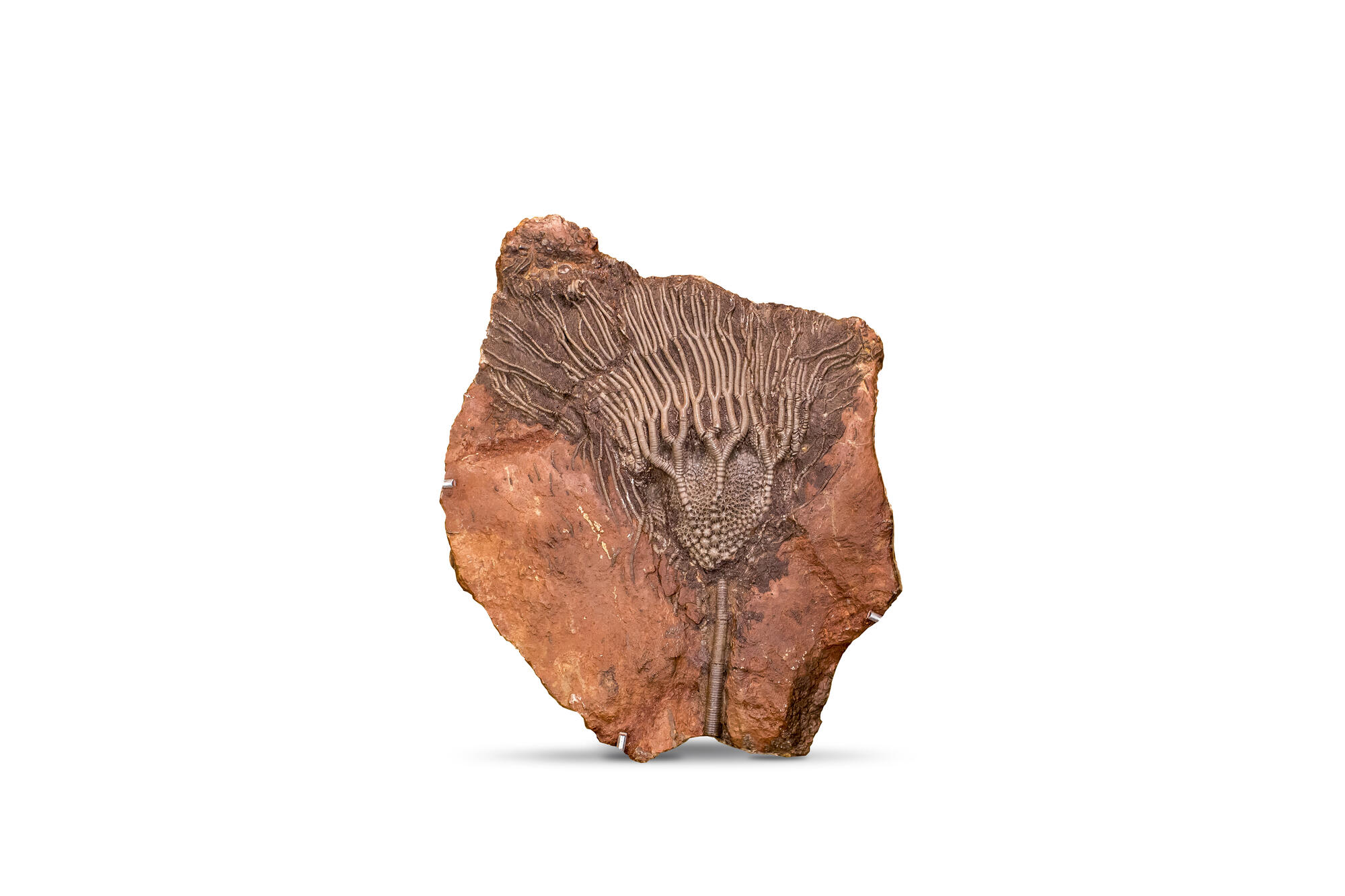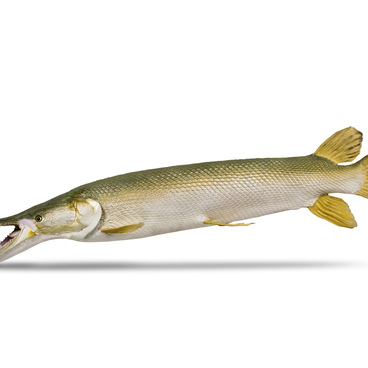Sea lilies are benthos (marine animals that live on the sea floor) and members of the Echinodermata phylum. It also includes sea urchins, starfish, sea cucumbers, brittle stars, extinct cystoids and blastoids. They all possess a water-vascular system — a set of canals that allow and help these animals to breathe, have the sense of touch and, even move around.
All modern Echinoderms have an endoskeleton that is covered in an epidermis, or outer skin covering. Another one of their distinctive features is the pentamerous (fivefold) symmetry: it is especially noticeable in the starfish.
Sea lilies are otherwise known as Crinoids. In Ancient Greek, the word means like a lily. In their appearance, these carnivorous aquatic animals resemble flowers. Their body is brightly colored and consists of a long stem, a cup-like crown (theca), and flexible mobile arms (brachials). The theca contains the crinoid’s digestive organs, and in the center of its upper part is its mouth.
The stem of a sea lily is composed of many movable segments. Scientists often find them as fossils. These segments can be shaped like gears, stars, or disks with holes in the middle. In the ancient times they were called ‘stone stars’ and it was believed that these were real celestial bodies which fell on Earth.
The stalked sea lilies (the ones that are attached to the sea bottom by a stalk) live at great depths — from 200 to 9700 meters. The stalkless species (comatulids) are often found closer to the surface: they are never attached to one place and can move along the bottom with their brachials, and even float up to the surface.
Crinoids are passive suspension feeders. They do not hunt their prey, instead they pass water through themselves and filter out unicellular organisms, small crustaceans, and larvae of invertebrate animals. These are what the sea lilies eat.
Gametes are produced in pinnules, the outgrowths on the ends of brachials, and then are liberated into the sea to be fertilized in the water; as a result, floating larvae are formed. After a few days, they cement themselves to the seabed and turn into a miniature replica of an adult sea lily. The stalkless species also have a stalk at this stage, but over time it falls off.
All modern Echinoderms have an endoskeleton that is covered in an epidermis, or outer skin covering. Another one of their distinctive features is the pentamerous (fivefold) symmetry: it is especially noticeable in the starfish.
Sea lilies are otherwise known as Crinoids. In Ancient Greek, the word means like a lily. In their appearance, these carnivorous aquatic animals resemble flowers. Their body is brightly colored and consists of a long stem, a cup-like crown (theca), and flexible mobile arms (brachials). The theca contains the crinoid’s digestive organs, and in the center of its upper part is its mouth.
The stem of a sea lily is composed of many movable segments. Scientists often find them as fossils. These segments can be shaped like gears, stars, or disks with holes in the middle. In the ancient times they were called ‘stone stars’ and it was believed that these were real celestial bodies which fell on Earth.
The stalked sea lilies (the ones that are attached to the sea bottom by a stalk) live at great depths — from 200 to 9700 meters. The stalkless species (comatulids) are often found closer to the surface: they are never attached to one place and can move along the bottom with their brachials, and even float up to the surface.
Crinoids are passive suspension feeders. They do not hunt their prey, instead they pass water through themselves and filter out unicellular organisms, small crustaceans, and larvae of invertebrate animals. These are what the sea lilies eat.
Gametes are produced in pinnules, the outgrowths on the ends of brachials, and then are liberated into the sea to be fertilized in the water; as a result, floating larvae are formed. After a few days, they cement themselves to the seabed and turn into a miniature replica of an adult sea lily. The stalkless species also have a stalk at this stage, but over time it falls off.



